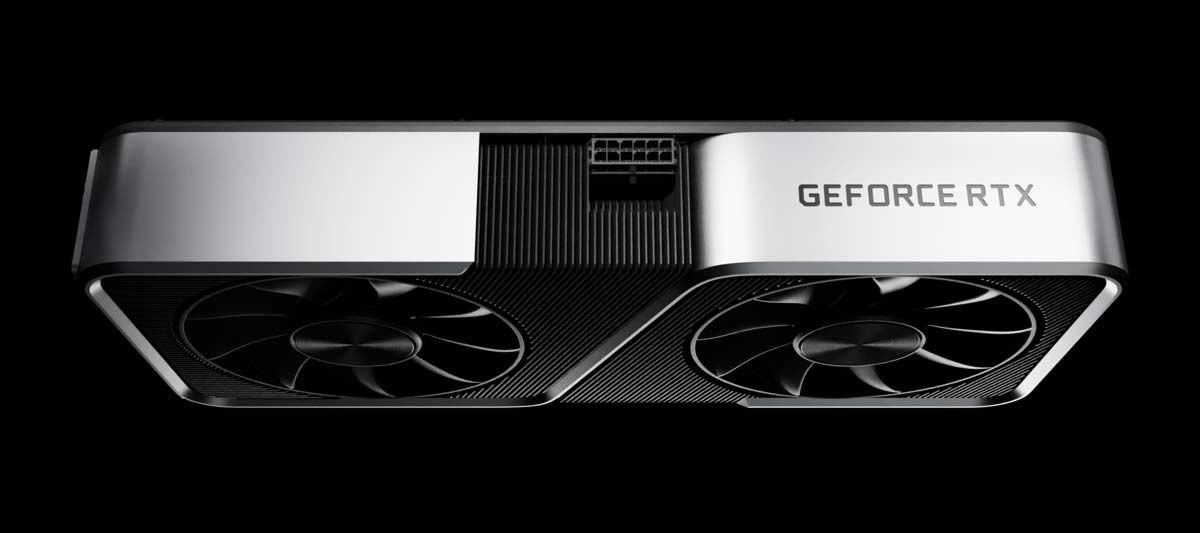Desktop RTX 3060 Ti With GA103 GPU Incoming Says AIDA64
This GPU was just unearthed as the power behind the new RTX 3080 Ti for laptops.
According to the latest set of beta release notes for a popular PC benchmarking tool, we will soon witness the launch of a new breed of Nvidia GeForce RTX 3060 Ti desktop graphics cards. Outwardly the specs should remain the same, without a new model number/designation. However, buyers will find that the GPU under the shroud is the GA103 rather than the GA104 of old.
HXL spotted this change in the AIDA 6.60.5918 beta downloads page. Please note that Nvidia hasn't confirmed the change, so take this information with a pinch of salt.
Earlier today, we were speculating how Nvidia's Mysterious GA103 GPU might find its way into the desktop graphics card market. The GA103 GPU came to light when a curious PC enthusiast in China decided to strip down his shiny new GeForce RTX 3080 Ti-powered laptop to take a closer look. Some expected this new mobile GPU to be a severely cut-down GA102, but instead, a brand new piece of silicon was discovered. We pondered specifically whether a desktop version of this GPU might target the area between the RTX 3070 Ti and RTX 3080, but as revealed by AIDA, we are looking at a rung or two lower at this time – a desktop GeForce RTX 3060 Ti.
| Nvidia GeForce |
RTX 3080 Ti laptop |
RTX 3060 Ti new |
RTX 3060 Ti old |
|
GPU code |
GA103 |
GA103 |
GA104 |
|
CUDA Cores activated |
7,424 (97%) of 7,680 possible with this GPU |
4,864 (42%) of 7,680 |
4,864 (79%) of 6,144 |
|
Memory |
16GB on 256-bit bus, 320-bit possible with this GPU |
8GB on 256-bit bus |
8GB on 256-bit bus |
|
Transistor Count |
? |
? |
17.4 billion |
|
Die Size |
496 mm^2 |
496 mm^2 |
392 mm^2 |
|
Node |
Samsung 8N |
Samsung 8N |
Samsung 8N |
See the comparison table above to get a grasp of what silicon surgery Nvidia is performing to create a GA103-based GeForce RTX 3060 Ti. You can see that the new RTX 3060 Ti card's GA103 GPU has 42% of the CUDA cores possible. At the time of writing, the GA104 is the most widely used GPU by Nvidia, but its production planning, with the updated laptops having just arrived, might have made it sensible to juggle a few SKUs.
We can't be sure of the reasons behind the "refreshed" desktop RTX 3060 Ti, but it makes good economic sense for NVIDIA (i.e., economies of scale with production, die error rates and keeping things simple).
Before signing off, we must comment on the possibility that there may be slight performance differences observable by PC enthusiasts who get their hands on the GA103-based RTX 3060 Ti. While the key tech specs like core counts, clocks, and memory remain the same, there is a chance here that the "new" model could run cooler, or overclock better, for example.
Nvidia would have been very careful to make sure there were no downsides to the change to avoid accusations of bait and switch. So it is reasonable to expect such slight benefits. With this in mind, we look forward to seeing tests of a refreshed RTX 3060 Ti, if and when it does materialize.
Get Tom's Hardware's best news and in-depth reviews, straight to your inbox.

Mark Tyson is a news editor at Tom's Hardware. He enjoys covering the full breadth of PC tech; from business and semiconductor design to products approaching the edge of reason.
